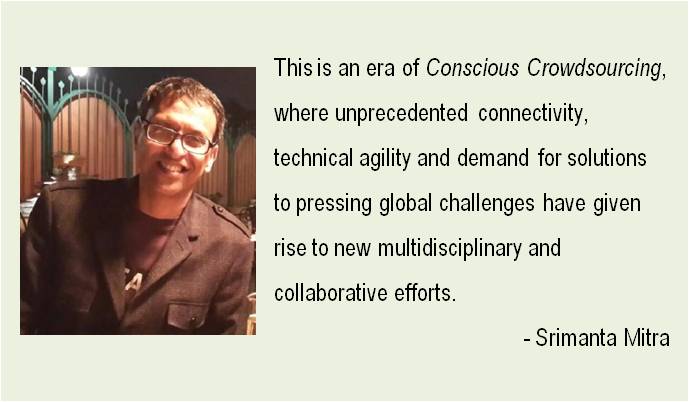In 2012, the American Alliance of Museums (then the American Association of Museums) released its yearly “Trendswatch” report. The number one trend that year? Crowdsourcing. The process of inviting the general public into the once hidden spaces of the museum, to perform jobs normally completed by museum staff was an interesting and innovative idea. This opportunity brought with it a chance to create a task that would satiate the appetites of the increasing number of patrons who were looking for more interactive experiences.
Just three years later, crowdsourcing continues to make strides in the museum professional world. In 2014, with funding from the Institute of Museum and Library Sciences and the National Endowment for the Humanities, the crowdsourcing coalition “Crowd Consortium” was created to “bring together libraries, archives, and museums in order to effectively use crowdsourcing techniques to increase what we know about artifacts held in national collections and to enhance the public experience of libraries, archives, and museums.” Since its inception, this consortium has created introductory webinars and conferences aimed to educate professionals and advertise the benefits crowdsourcing can have on cultural institutions.
What is Conscious Crowdsourcing?
Weber Shandwick’s Social Impact team launched the next report in its Innovation Trends Report series, focused on this very topic.
In our view, Conscious Crowdsourcing is the practice of crowdsourcing to generate awareness of, action for, or solutions to pressing social and environmental challenges.
It builds on the longstanding practices of crowdsourcing to access information, services or content – for instance, finding the best local plumber to fix that leaky faucet or the favorite neighborhood coffee bar in a new city. This process has accelerated and scaled considerably with technology and the rise of social media, but it’s worth celebrating that as far back as 1900, The National Audubon Society has organised people to do an annual count of all the birds in the Western Hemisphere. But over the past several decades, the practice of crowdsourcing has been deployed more and more often to benefit social and environmental causes. And so too, with the rise of social media, the pace of possibility for progress for these causes has grown exponentially greater.
The distinction between conscious crowdsourcing and everyday crowdsourcing is the former’s focus on gathering information, ideas and actions that contribute to social progress. That’s why we see this as such an urgent topic to explore today. This is an era of ‘Conscious Crowdsourcing’ – where unprecedented connectivity, technical agility and demand for solutions to pressing global challenges have given rise to new multidisciplinary and collaborative efforts by companies, foundations, nonprofits, governments and individuals to advance social progress.
Similar to crowdfunding, which continues to effectively raise capital to support a cause or initiative from a broad base of supporters, crowdsourcing broadens the collective effort to source resources, especially intellectual capital, from multiple sources.
On one end of the spectrum, social media challenges with the aim of sparking broad-based participation and awareness, such as the #IceBucketChallenge, demonstrate a mass of support by blitzing social media feeds with conversation about an issue or organisation, thereby raising its profile and priority. On the other end are innovation challenges, such as the XPRIZE, which catalyses collective efforts to create new technologies or solutions that benefit humanity, or the Global Challenges Foundation New Shape Prize, which is crowdsourcing ideas on new models of global cooperation capable of handling the most pressing threats to humanity.
Why Conscious Crowdsourcing Matters?
Conscious crowdsourcing is a tool that has applications for people, networks, nonprofits, companies and government agencies. It’s a practice that smartly leverages technology to unlock new ideas, forge new connections and advance large-scale advocacy, such as the #LoveWins campaign for marriage equality or #BlackLivesMatter social justice movement.
For people engaged in the urgent fight for fundamental values – such as equity, civility, diversity and inclusion – conscious crowdsourcing is at the center of movements to uphold these values, such as #RefugeesWelcome and the Women’s March Global this year.
For nonprofits, conscious crowdsourcing is a core component of efforts to raise awareness and support for key causes or issues. One of the most talked about examples, is the #IceBucketChallenge, for its impact on ALS, a progressive neurodegenerative disease, notably the more than $200 million it raised to help accelerate scientific inquiry to find a cure for ALS.
The Conscious Crowdsourcing Roadmap
One of the primary motivations for developing our Innovation Trends Report series is to explore key trends that we see at the center of social impact communications – to understand and apply them to our work, and to be a strategic resource for purpose-driven brands and organisations.
At the center of each of our reports are roadmaps for action that equip people with a way forward, a path to moving from insights on a topic like conscious crowdsourcing to action and implementation.
The report provides a six-step roadmap for purpose organisations across sectors to align their practices with best-in-class conscious crowdsourcing efforts for social change.
Step 1: Focus on a clear and compelling issue or initiative to advance
Step 2: Recruit the perspectives and expertise to shape the message
Step 3: Facilitate inclusive and efficient collaboration and sharing
Step 4: Design a nimble and responsive communications platform
Step 5: Deploy messengers and storytellers as a united front
Step 6: Evolve the story based on learnings and momentum
For more information, including insights on crowdsourcing learning and transparency, mobilising networks for advocacy, the role of crowdsourcing in journalism and recommended resources to learn more on the topic, I invite you to read our Conscious Crowdsourcing report here and to share your impressions, questions and ideas with us.




Be the first to comment on "Giving more power to the people through Conscious Crowdsourcing"